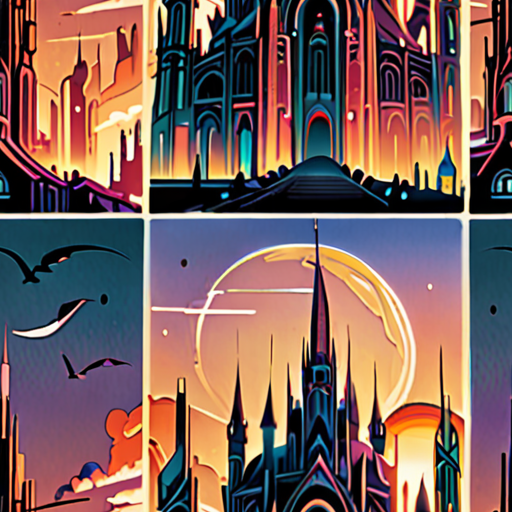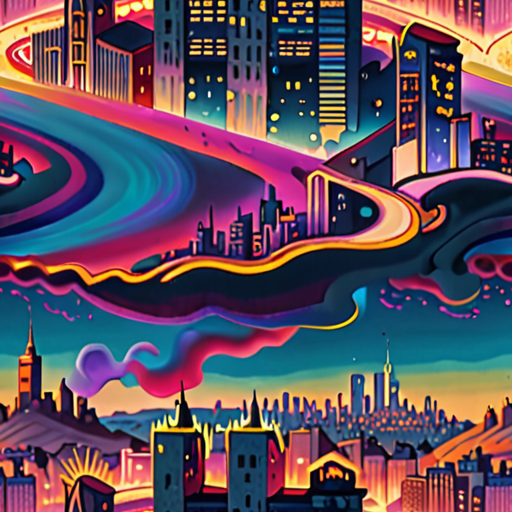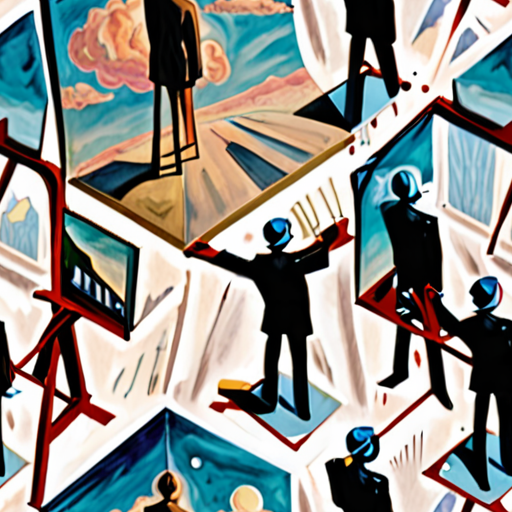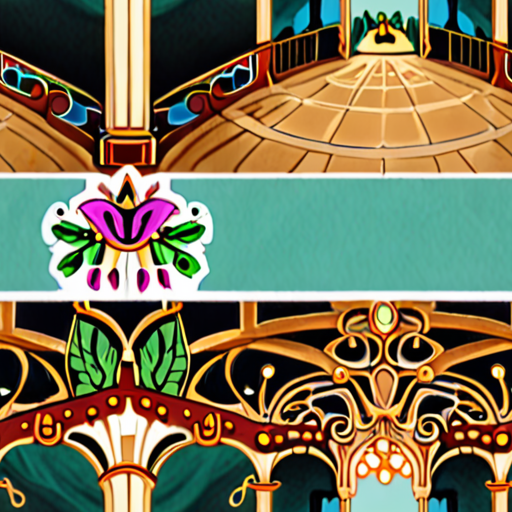The world of art is a vast and wondrous place, full of diverse styles and techniques that continue to inspire and captivate audiences around the globe. From the intricate details of visual art to the bold statements made by modern art, each art style offers a unique window into the human experience, reflecting the culture, history, and creativity of its time. Whether you’re an aspiring artist looking to explore your own artistic voice or simply someone who appreciates the beauty of art, understanding the different types of art and their corresponding styles is essential for unlocking the secrets of this fascinating world.

Exploring the Diverse World of Art
As an artist and art enthusiast, I’m often asked what the different types of art are. In reality, there are numerous forms of art, each with its unique characteristics and expressions. At Artfull Journey, we’re passionate about exploring these diverse forms and sharing our knowledge with fellow creatives and art lovers alike.
The Seven Primary Types of Art
While there may be many variations and subcategories, the seven primary types of art are:
- VISUAL ARTS: This category encompasses a broad range of art forms, including painting, drawing, sculpture, photography, printmaking, and mixed media.
- MUSIC: Music is a universal language that evokes emotions and brings people together. It includes genres like classical, jazz, rock, pop, hip-hop, and electronic music.
- DANCE: Dance is a dynamic and expressive art form that combines movement, rhythm, and emotion. It includes styles like ballet, contemporary, modern, ballroom, and street dance.
- Theater is a live performance art that tells stories, explores themes, and engages audiences. It includes genres like drama, comedy, musical theater, and experimental theater.
- Literature is a written art form that expresses ideas, emotions, and experiences. It includes genres like fiction, nonfiction, poetry, and drama.
- Film and video are visual arts that tell stories, convey messages, and entertain audiences. They include genres like documentary, narrative film, animation, and experimental video.
- Performance art is a live art form that pushes boundaries, challenges norms, and engages audiences. It includes genres like installation art, happenings, and interactive art.
At Artfull Journey, we believe that each type of art has its own unique beauty and significance. By exploring and appreciating these diverse forms, we can deepen our understanding of the world around us and tap into our own creativity and imagination. Whether you’re an artist, art lover, or simply someone who appreciates the beauty of art, we invite you to join us on this journey of discovery and exploration.
Understanding the Four Main Art Styles
The world of art is incredibly diverse, with numerous styles and movements that have evolved over time.
- Renaissance Art Style
- Impressionist Art Style
- Cubist Art Style
- Surrealist Art Style
Renaissance art emerged during the 14th to 17th centuries in Europe, characterized by realism, humanism, and classical influences.
This style is marked by highly realistic depictions of the human form, often set against a backdrop of classical architecture and landscapes.
Some notable examples of Renaissance art include Leonardo da Vinci’s Mona Lisa and Michelangelo’s Sistine Chapel ceiling.
For more information on Renaissance art, visit our Renaissance Art Style page.
Impressionist art emerged in France during the late 19th century, characterized by short, broken brushstrokes and vivid, unblended colors.
This style focuses on capturing the fleeting moments of everyday life, often depicting scenes of modernity and urbanization.
Notable Impressionist artists include Claude Monet, Pierre-Auguste Renoir, and Mary Cassatt.
Learn more about Impressionist art on our Impressionist Art Style page.
Cubist art emerged in the early 20th century, characterized by fragmented forms and multiple perspectives.
This style seeks to break free from traditional representations of reality, exploring new ways of depicting space and time.
Notable Cubist artists include Pablo Picasso and Georges Braque.
Discover more about Cubist art on our Cubist Art Style page.
Surrealist art emerged in the 1920s, characterized by fantastical and dream-like imagery.
This style explores the subconscious mind, often incorporating elements of fantasy, mythology, and symbolism.
Notable Surrealist artists include Salvador Dali and Rene Magritte.
Explore the world of Surrealist art on our Surrealist Art Style page.

Understanding Style and Technique in Art
In the world of art, two fundamental concepts often get intertwined – style and technique. While they’re closely related, they serve distinct purposes in the creative process.
-
Style:
Style refers to the unique expression of an artist’s vision, perspective, and emotional connection to their subject matter. It encompasses the aesthetic qualities that set their work apart from others, such as color palette, composition, and brushwork. Think of style as the artist’s fingerprint, making their artwork instantly recognizable.
-
Technique:
Technique, on the other hand, pertains to the skills and methods employed by an artist to execute their creative vision. It involves the mastery of various mediums, tools, and processes to convey their intended message. Techniques can range from traditional methods like painting and drawing to modern digital tools and software.
For instance, an artist might employ a specific technique, such as layering or glazing, to achieve a particular effect in their painting. However, the overall style of the piece would still be defined by its unique composition, color scheme, and emotional resonance.
The Intersection of Style and Technique
While style and technique are distinct, they’re not mutually exclusive. In fact, they often intersect and influence each other. An artist’s style can inform their choice of technique, and vice versa. By mastering various techniques, an artist can develop a distinctive style that sets them apart from others.
Exploring Style and Technique
At Artfull Journey, we believe that understanding style and technique is essential for artists looking to grow and evolve in their craft. Our platform offers a wealth of resources, including tutorials, workshops, and online courses, to help artists hone their skills and discover new techniques. Whether you’re a seasoned pro or just starting out, our community is dedicated to supporting your artistic journey.
Discovering Inspiration
Looking for inspiration? Check out some of our favorite art blogs and websites, such as Artists Network and Doodlewash . These platforms showcase incredible artwork, share valuable tips and tricks, and offer a glimpse into the creative processes of talented artists around the world.
Developing Your Unique Voice
Remember, style and technique are not fixed entities – they’re constantly evolving and adapting to an artist’s growth and experiences. By embracing experimentation and taking risks, you’ll develop a unique voice that sets your artwork apart from others. So don’t be afraid to try new things, explore different mediums, and push the boundaries of what’s possible.

Types of Art
The world of art encompasses a diverse array of styles, mediums, and techniques, each with its unique characteristics and historical significance.
-
Visual Arts
-
Painting
- Watercolor Painting: A delicate and transparent medium that involves applying water-soluble pigments to paper or fabric.
- Oil Painting: A slow-drying paint made from pigments suspended in a drying oil, often used to create rich, vibrant colors.
- Acrylic Painting: A fast-drying paint made from a mixture of pigment, binder, and water, ideal for bold, expressive works.
-
Sculpture
- Ceramic Sculpture: A three-dimensional work created from clay, often fired in a kiln to achieve a hard, durable finish.
- Metal Sculpture: A three-dimensional work crafted from metal materials, such as bronze, steel, or aluminum.
- Wooden Sculpture: A three-dimensional work carved from wood, often featuring intricate details and textures.
-
Performing Arts
-
Dance
- Ballet: A classical dance form characterized by precise movements, elegant poses, and technical footwork.
- Contemporary Dance: A modern dance style that emphasizes expression, emotion, and individuality.
- Jazz Dance: A high-energy dance style that combines elements of ballet, tap, and African-American social dance.
-
Theater
- Playwriting: The art of crafting scripts for live performances, often featuring dialogue, characters, and plot development.
- Acting: The process of portraying characters on stage or screen, requiring emotional depth, physicality, and vocal technique.
- Directing: The art of guiding actors, designers, and technicians to bring a play or production to life.
Music
-
Classical Music
- Instrumental Music: Music composed for solo instruments or ensembles, often featuring complex harmonies and melodies.
- Vocal Music: Music sung by one or more voices, often accompanied by instrumental accompaniment.
-
Popular Music
- Rock Music: A genre characterized by strong beats, electric guitars, and often rebellious lyrics.
- Pop Music: A genre emphasizing catchy melodies, simple harmonies, and commercial appeal.
- Jazz Music: A genre blending African-American music traditions with European instrumentation and harmony.
Literary Arts
-
Fiction
- Novels: Long-form narratives exploring character development, plot progression, and thematic resonance.
- Short Stories: Brief narratives focusing on concise plotting, vivid characterization, and lyrical prose.
-
Poetry
- Free Verse Poetry: Unstructured poetry that prioritizes emotional expression and personal experience.
- Sonnet Poetry: Structured poetry following traditional rhyme schemes and meter patterns.
Cinematic Arts
-
Screenwriting
- Scriptwriting: Crafting stories for film, television, or digital media, often involving dialogue, character arcs, and pacing.
- Storyboarding: Visualizing scenes and sequences before filming, helping directors and producers plan shots and camera angles.
-
Film Production
- Direction: Guiding actors, cinematographers, and other crew members to capture the intended vision.
- Editing: Assembling footage into a cohesive narrative, balancing pace, tone, and emotional impact.
Discovering Your Unique Artistic Voice
As an artist, finding your unique art style can be a challenging yet rewarding journey.
- Dive into your creativity by experimenting with various mediums and techniques.
- Explore different styles and genres to understand what resonates with you.
- Pay attention to your inspirations and influences – who are the artists that spark your imagination?
- Develop a personal vision board to visualize your artistic goals and aspirations.
Understanding Your Artistic Identity
Reflecting on your artistic identity involves exploring your values, passions, and motivations.
- Identify your strengths and weaknesses as an artist.
- Consider your preferred themes, subjects, and color palettes.
- Think about the emotions and messages you want to convey through your artwork.
- Develop a consistent aesthetic by refining your style and technique.
Embracing Your Uniqueness
Embracing your uniqueness means celebrating your individuality and expressing yourself authentically.
- Don’t compare yourself to others – focus on your own artistic growth and development.
- Pursue your interests and passions, even if they’re unconventional.
- Cultivate a community of supportive fellow artists who encourage and inspire you.
- Stay true to your artistic vision, even in the face of criticism or uncertainty.
Continuously Evolving and Growing
Your artistic style is a dynamic entity that evolves over time.
- Set aside time for self-reflection and experimentation.
- Seek out new challenges and opportunities to push your creative boundaries.
- Stay curious and open-minded, embracing new ideas and perspectives.
- Celebrate your progress and accomplishments along the way.

The 5 Creative Arts
Creative Arts encompasses a broad spectrum of disciplines that involve the creation and expression of ideas through various mediums.
-
Dance
Dance is a dynamic and expressive art form that involves movement and rhythm. It can take many forms, including ballet, contemporary, hip-hop, and ballroom dancing.
-
Music
Music is a universal language that evokes emotions and conveys messages through melody, harmony, and rhythm. It encompasses a wide range of genres, from classical to jazz, rock, pop, and electronic music.
-
Theatre
Theatre is a collaborative art form that combines acting, directing, playwriting, and design to tell stories and convey emotions. It includes various styles, such as drama, comedy, musical theatre, and improvisation.
-
Visual Arts
Visual Arts encompass a diverse range of creative expressions, including painting, drawing, sculpture, photography, printmaking, and digital art. These mediums allow artists to communicate ideas and emotions through visual representations.
-
Design
Design is a multifaceted discipline that involves the creation of functional and aesthetically pleasing objects, environments, and experiences. It includes graphic design, interior design, fashion design, product design, and architecture.
As an artist, exploring these creative arts can lead to personal growth, self-expression, and innovation. By embracing the diversity of creative arts, we can foster a deeper understanding of ourselves and the world around us.
Conclusion:
The 5 creative arts – Dance, Music, Theatre, Visual Arts, and Design – offer a rich tapestry of creative expressions that enrich our lives and cultures. By embracing these arts, we can tap into our imagination, creativity, and potential, leading to a more fulfilling and meaningful existence.

0 Comments